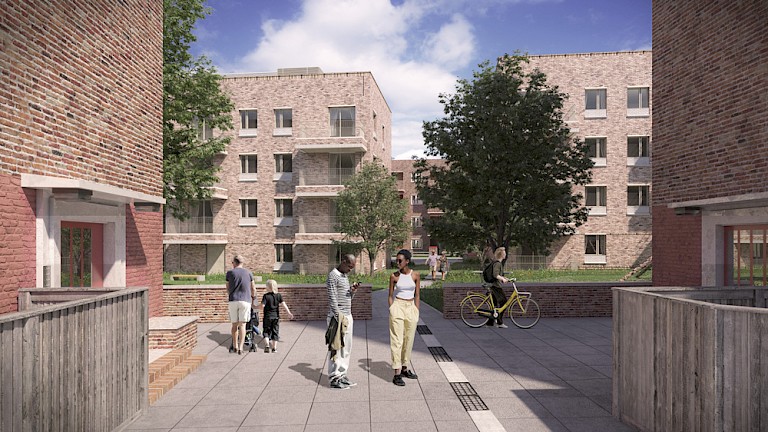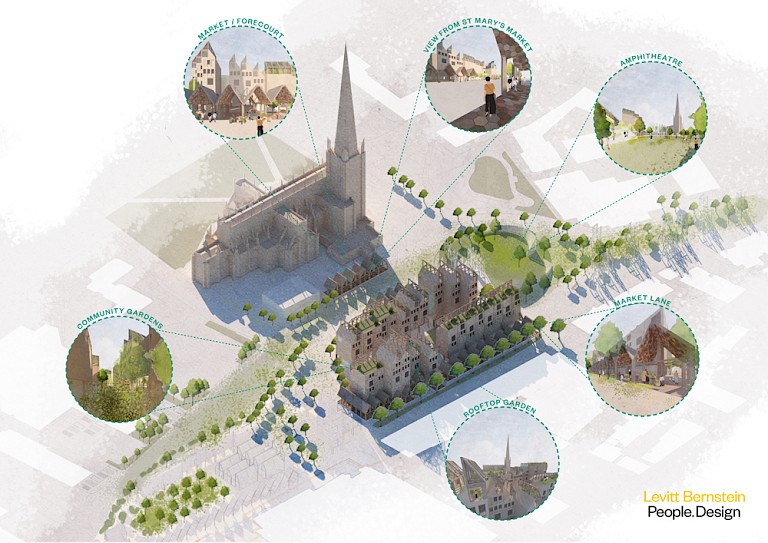
We have secured planning permission for Plashet Road, a 100% affordable housing scheme designed to a Passivhaus standard. It will provide 65 homes for social rent, with provision of 39% family dwellings, along with a nursery for the community. The scheme has been awarded £6.5 million in GLA funding.
The exemplar building will be built to Passivhaus ‘Classic’ certification, delivering a design that is sustainable from first principles, promotes low carbon living, minimises energy costs for residents and reduces the long-life costs of maintenance and management for the borough.
We incorporated our own research on Passivhaus and worked closely with sustainability experts Etude, who provided guidance from first principles through to thermal modelling and specification, throughout the design stages. We also developed the design with M&E engineers Max Fordham to reduce operational carbon and coordinate the specific services requirements for a Passivhaus scheme, as well as with structural engineers Heyne Tillet Steel to reduce the amount of concrete within the structural frame, and therefore the amount of embodied carbon.
The form of the building takes a fabric-first approach and has evolved in response to Passivhaus principles, the site’s orientation and the local environment. By locating gallery access routes to the north or east of each building, most balconies, living rooms and bedrooms will be south- or west-facing to optimise daylight and the potential for solar gain. All flats are dual aspect with at least one aspect to a quiet area, allowing natural ventilation to manage summer temperatures. External galleries, front doors and balconies overlook the courtyard to foster a strong sense of community.
The new courtyard provides shared amenity alongside private amenity for the ground floor flats. Doorstep play was considered integral and has been designed to sit unobtrusively within the landscape. The hard landscape is interspersed with naturalistic, low maintenance planting, including a variety of species tolerant of minor droughts and wetter conditions, which have a known value for wildlife.
The project is expected to complete in late 2022.



